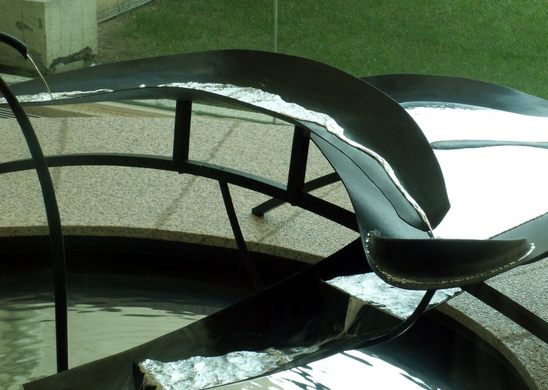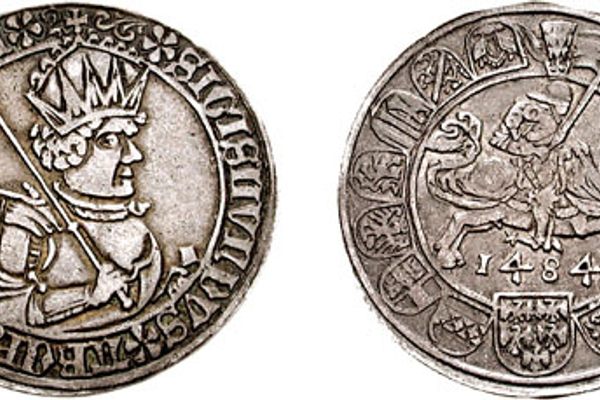Mercury, also known as quicksilver, is a beautiful, mirror-skinned metal that is liquid at room temperature. It is also extremely toxic. For many years, the world’s greatest source of mercury were the mines at Almadén, Spain, which produced some 250,000 metric tons of mercury over nearly two millennia of operation.
So when Spain decided to build a monument to the mine (which was long worked by criminals and slave laborers, most of whom died of mercury poisoning), they commissioned American sculptor Alexander Calder to build a graceful fountain which, instead of water, would pump pure mercury.
Calder’s Mercury Fountain was displayed at the Spanish Republican Pavilion for the 1937 World’s Fair in Paris, and was situated in front of Pablo Picasso’s famous painting Guernica. Like Guernica, Calder’s sculpture should be understood in the context of the Spanish Civil War and was intended to have a political meaning. At the time, Almadén was controlled by Republican forces and under an extended siege by General Franco’s fascist troops.
The inherent beauty of the liquid metal was well understood, but its toxicity was not. Today, the fountain resides in the Fundacio Joan Miro in Barcelona, Spain, and continues to pump pure mercury, though now it does so behind a pane of glass to protect viewers from touching or breathing fumes produced by this toxic work of art.
Know Before You Go
Catch the funicular up Montjic Hill from Paral·lel station, turn left on exiting the station, and the Joan Miro Foundation building is about 100m on the other side of the road. The fountain is located inside of the gallery and you will need to pay 12 euro to gain entry.



































Follow us on Twitter to get the latest on the world's hidden wonders.
Like us on Facebook to get the latest on the world's hidden wonders.
Follow us on Twitter Like us on Facebook